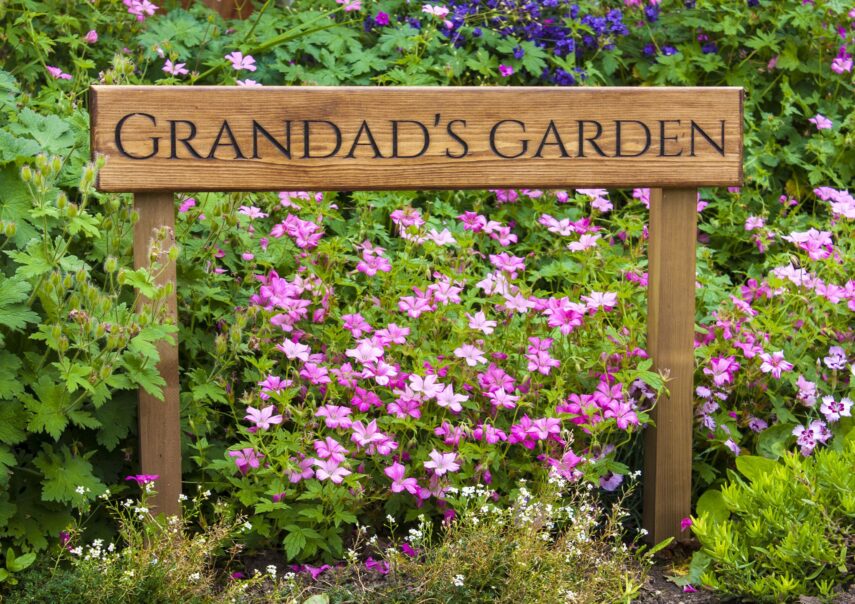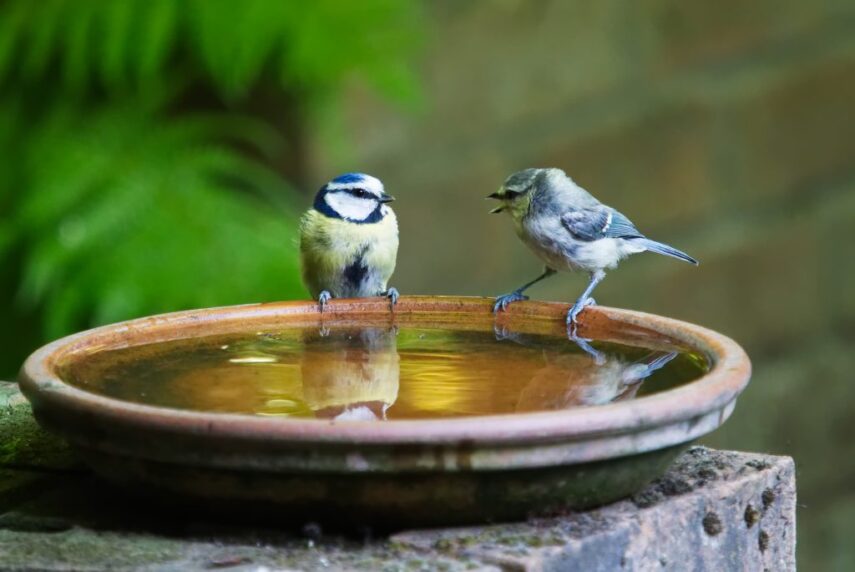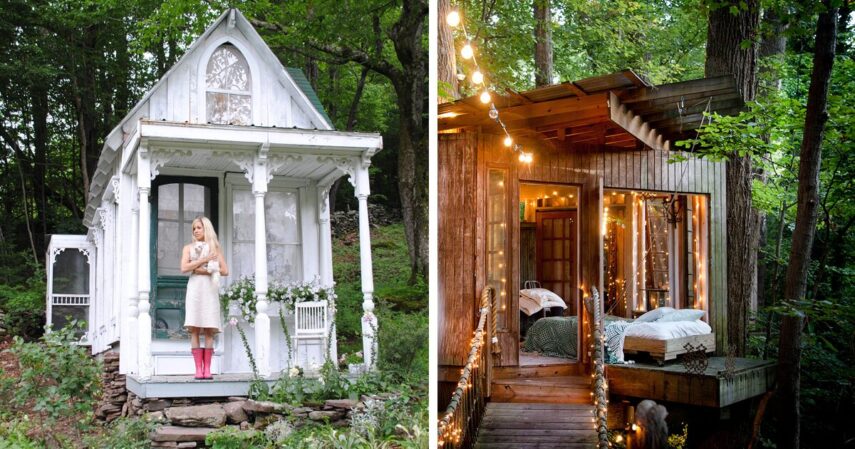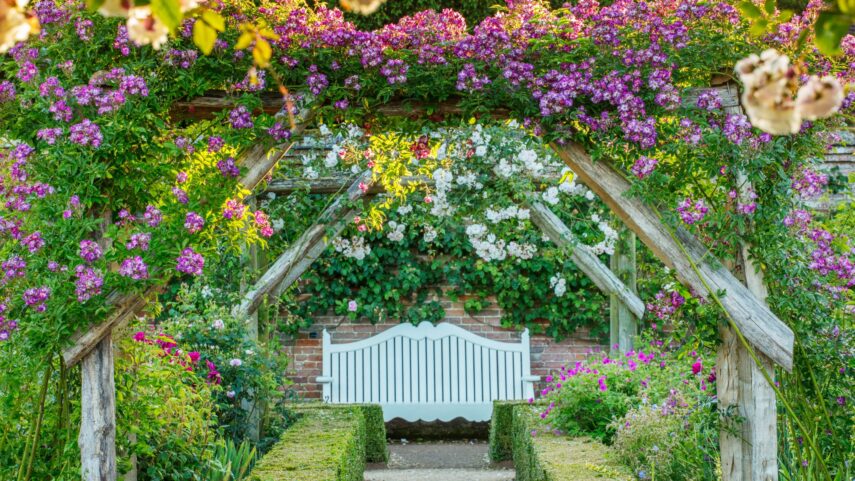When it comes to creating a captivating garden space, the sky’s the limit. From colorful blooms to a rustic charm, the range of elements that can be integrated into your garden’s design is endless. For those with green fingers on a mission to create a unique and personalized outdoor haven, here are six additions to your garden needs that you may not have considered.
1. Personalised Garden Signage

First impressions matter and that also applies to gardens. Adding personalized garden signs not only provides a warm welcome but also stamps your personality on the space. Your choice of signage can vary from humorous quotes to the names of the garden’s key residents.
One brilliant way to make these signs is by using durable materials such as acrylic or perspex. Companies like Simply Plastics can assist you in customizing these signs to your exact specifications. It’s a simple addition that will add a whole new level of uniqueness to your outdoor sanctuary.
2. Living Wall or Vertical Garden
Transform a drab, blank wall into a lush, living tapestry with a vertical garden. This innovative gardening trend is ideal for small gardens or balconies where horizontal space is limited. By simply adding vertical structures and planting upward, you can grow herbs, flowers, and even vegetables. Plus, they can act as a stunning backdrop for your garden and a haven for wildlife.
3. Wildlife-Friendly Elements

Creating a wildlife-friendly garden is more than just a beautiful feature; it’s an essential contribution to local ecosystems and the planet’s biodiversity. Here’s how you can transform your garden into a haven for various creatures.
- Birdhouses: Installing birdhouses can provide safe nesting spots for local bird species. Choose designs that are specific to the birds in your area and place them at different heights to attract a variety of species. Adding bird feeders with appropriate seed mixes will also encourage visits.
- Bat Boxes: Bats are great natural pest controllers. By installing bat boxes, you’re offering them a place to roost and, in return, they will help keep your garden free of insects like mosquitoes. Place the bat boxes in a quiet part of your garden and at a height that is safe from predators.
- Hedgehog Homes: Hedgehogs are charming and useful garden inhabitants, known for eating garden pests like slugs and snails. Providing hedgehog homes offers these creatures a place to hibernate and shelter. Leaving areas of your garden wild with leaves and logs also helps them find natural food.
- Bee Hotels: Bees play an essential role in pollinating flowers. A bee hotel is a specially designed structure that provides nesting sites for solitary bees, which don’t live in hives like honeybees. Placing a bee hotel near pollen-rich flowers ensures that these crucial pollinators have a place to stay.
- Butterfly-Friendly Plants: Planting flowers that are known to attract butterflies can turn your garden into a colorful and lively space. Choose native plants that provide nectar for adult butterflies and leaves for caterpillars to munch on. Adding a shallow water dish with stones for them to land on provides drinking water.
- Frog and Toad Abodes: If you have a pond or water feature, consider adding spots for amphibians to rest and hide. Floating logs, submerged rocks, or even specially designed frog houses provide shelter, while plants like water lilies offer shade and protection.
4. A She Shed or Man Cave

If you have a little extra space in your garden, consider creating a garden retreat. These sheds are more than just storage spaces. They are an opportunity to carve out your personal haven – a space for relaxation, work, or even hobbies. Fill it with comfortable furniture, books, art supplies, or whatever brings you joy. Think of it as your own private escape at the end of your garden path.
5. Unique Water Features
Water features are not just limited to large ponds or fountains. Small-scale water features, such as bowl or pot fountains, can add a touch of tranquillity to your garden. Even better, you can build one using upcycled items to create a one-of-a-kind piece. The gentle trickling sound of water also attracts wildlife, giving you a peaceful garden brimming with life.
6. Garden Art

Finally, why not turn your garden into an outdoor gallery? Outdoor sculptures, mosaic stepping stones, or even a painted fence can dramatically transform your garden. These pieces provide year-round interest and can serve as focal points, guiding the eye around your garden.
Keep in mind that your garden serves as an expansion of your living area. It’s not only about plants and flowers but also a reflection of your creativity and individuality. In addition to these unique garden additions, staying informed about the potential risks posed by certain plants is crucial; the 2024 guide provides insights into five poisonous and toxic plants that every gardener should be cautious of.
By incorporating these six unique additions, you’re not only beautifying your garden but also creating a truly personalized and dynamic space. Don’t be afraid to experiment and let your personality shine through – that’s what makes your garden uniquely yours. Happy gardening!
Frequently Asked Questions
Are These Additions Suitable for All Types of Gardens?
While most of the additions are versatile and can be adapted to various garden sizes and styles, some may require specific conditions or considerations. Check the individual descriptions in the blog post to see what might suit your particular garden setup best.
How Expensive Are These Garden Additions?
The cost can vary widely depending on the complexity and materials used for each addition. Some can be done as DIY projects with minimal expenses, while others may require professional installation or rare components, leading to a higher cost.
Can I Install These Additions Myself, or Do I Need Professional Help?
Some of the unique additions may be simple enough for a gardening enthusiast to install, especially if you’re handy with tools. Others, especially those involving plumbing or electrical work, may require professional assistance. Each addition in the blog post specifies the level of expertise needed.
Are These Additions Environmentally Friendly?

Most of the garden additions mentioned are designed with sustainability in mind, utilizing materials or methods that minimize harm to the environment. Specific eco-friendly options are highlighted within the blog post.
Will These Additions Require a Lot of Maintenance?
Maintenance requirements vary among the different additions. Some might need regular care and attention, while others are more set-and-forget. The blog post outlines the maintenance needs for each unique addition.
Can These Additions Enhance the Value of My Property?
Many garden enhancements can indeed increase the aesthetic appeal and functionality of your outdoor space, potentially adding value to your property. Investing in high-quality materials and professional installation, where needed, can further contribute to this value increase.
What if I Have a Small Garden? Can I Still Implement These Ideas?
Yes, many of the unique additions mentioned in the blog post can be adapted to fit smaller gardens. There are also specific suggestions tailored for compact spaces, ensuring that every gardener can find something to suit their needs.
Where Can I Find the Materials or Professionals Needed for These Additions?
Materials for these unique garden additions can be found at local garden centres, hardware stores, or online retailers. For professional assistance, you may want to consult local landscaping or gardening service providers.
How Can I Get More Personalized Advice on What Would Suit My Garden Best?
For personalized advice, consider consulting a local garden designer or landscape architect who can assess your specific situation and provide tailored recommendations. Alternatively, you may find community gardening forums or social media groups where fellow garden enthusiasts share advice and experiences.







